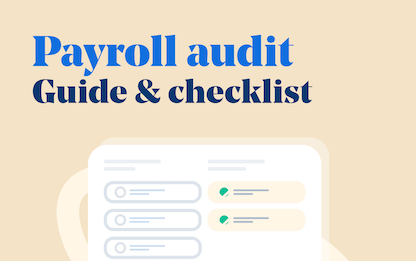- Blog
- |Managing Payroll
- >Payroll legislation
- >2023 autumn statement announcements
Autumn Statement 2023: Top Announcements for Payroll & Business


Another year gone by means it’s time for another autumn statement here in the UK.
Presented for the 2nd year in a row by Chancellor Jeremy Hunt, this year’s autumn statement was jam-packed with new legislation, particularly for businesses, as well as a few surprises thrown in for good measure.
At the same time, many rates and thresholds were frozen, which means there are fewer numbers for HR and Finance teams to memorise.
The brief, according to the Chancellor, was simple: to promote business and economic growth for the UK. Whether his initiatives will have the desired effect or fall short of these goals is sure to be a hotly debated topic over the coming days and weeks.
Here’s PayFit’s breakdown of the 2023 Autumn Statement, including all the key announcements affecting businesses and their payroll.
Economic background
While last year’s unusual mini-budget is starting to fade into our collective memory, the economic backdrop remains a challenging one.
Inflation remains a significant hurdle for both ordinary earners and businesses, with the Office for Budget Responsibility (OBR) predicting average inflation will drop to 2.8% by the end of next year before falling further to 2% by 2025.
At the same time, debt is also set to rise from 91.6% of GDP to 92.7% in the 2024/2025 financial year. All this to say, the economy isn’t exactly fighting fit, and the cost of living still looms large.
Given this, Jeremy Hunt’s Autumn Statement firmly focused on boosting pay packets and incentivising people back into work. Pension reform is another area the Chancellor has been looking into, with a consultation now on the horizon to explore this topic more in-depth.
Autumn Statement: key announcements for businesses
With that in mind, let’s look at a few of the top announcements most relevant to companies or employers.
National Insurance
Perhaps the biggest headline from the 2023 autumn statement was the reduction to National Insurance (NI).
The main rate for class 1 NI will be reduced by two percentage points for employees (sadly, not for employers), giving workers a slight boost in take-home pay (despite other rates and thresholds being frozen).
This will be applicable from the 6th of January 2024 across all existing NI categories, which means businesses will need to mobilise quickly to update their payroll.
For employees in NI category A, this means their NI rate will reduce from 12% to 10%. Directors, however, will need their NI to be re-calculated using a hybrid rate: for directors in NI Category A, their rate will be based on:
Nine months at the old rate of 12%,
Three months at the new rate of 10%
This would give them a hybrid rate of 11.5%. In other words, non-cumulative directors will pay 10% in January and February, with a cumulative recalculation of 11.5% in March 2024. On the other hand, cumulative directors will see their NI re-calculated in January 2024 based on the hybrid rate of 11.5% (which could, in some instances, result in a refund for that month).
Amongst other National Insurance reforms, though less relevant for employers, are changes to Class 2 and Class 4 NI for self-employed individuals.
PayFit Top Tip
With payroll software, keeping up to date with legislation changes, like changes to National Insurance, becomes a lot easier. Instead of having to update these rates manually, the platform’s expert team will re-code these for you. PayFit’s unique programming language allows us to make rate changes quickly and efficiently so you can get up and running with these in no time.
Frozen rates
Remember those frozen rates and thresholds we mentioned? While the Chancellor announced a few unexpected changes as part of his statement, he also decided to keep a lot of other rates the same for the 2024-2025 tax year, including:
Employer’s Class 1 National Insurance rate
Employer’s Class 1A National Insurance rate (on benefits and termination payments over £30k)
Employer’s Class 1B National Insurance rate (on benefits reported via a PAYE Settlement Agreement (PSA)
National Insurance thresholds, including the Lower Earnings Limit (the point at which an employee becomes eligible for statutory payments and is used for state pension eligibility)
Personal tax allowance (previously announced in 2021)
Rates of tax within the rest of the UK (England and Northern Ireland)*
Employment allowance
Company car benefit rates.
* the Scottish and Welsh courts have yet to decide what their respective rates and thresholds will be.
Overall, this means little growth for pay packets, especially against the Cost of Living backdrop. However, businesses will have fewer new rates to memorise and update their systems with, making things a little easier from an administrative perspective.
National Living Wage (NLW)
More commonly referred to as the ‘minimum wage’, The National Living Wage (which is the highest rate of the National Minimum Wage (NMW)) now applies to all employees aged 21 and over. The rate has also been increased from £10.42 to £11.44/hour, or a 9.8% rise.
That’s a boost of £1.02 for lower-paid workers. As with previous NLW and rates announcements, these changes won’t take effect till April.
In addition to this, the following rates have also been updated:
Employees aged 18-20, from £7.49 to £8.60
Employees aged under 18, from £5.28 to £6.40
Apprentices under 19, or over 19, but in their first year, also from £5.28 to £6.40.
While a rise in the NLW is always good news for lower earners, the pressure will be on businesses to meet this new basic pay rate.
PayFit Top Tip
With any big increase in rates it’s worth considering whether to apply the alabaster ruling for any employees who are currently on, are due to or have recently been on maternity leave. You can find out more about how to apply the ruling in this Help Centre article.
Pensions
Alongside a rise in state pensions, which would honour the ‘triple lock’, the government will launch a consultation into this concept of a pension pot ‘for life’. Put simply, this inquiry will look at whether it makes sense for employees to have new employers pay into an existing pension pot every time they switch jobs.
While an interesting idea and one that could help streamline pension savings for employees, it would be very complicated for businesses. Instead of only needing to keep track of 2-3 pension schemes, employers would be faced with managing a different scheme per employee. Additionally, employers won’t have access to other employer schemes, so there will be some changes for pension providers to implement as well. Whether this is an idea that will be embraced by the payroll community remains to be seen.
Benefits
While less relevant for employers, it’s worth being aware that benefits will increase in line with September’s inflation figures. As with many of these autumn statement changes, this increase will occur from April and apply to a range of benefits, including Universal Credit.
On the other hand, the Chancellor also confirmed plans to phase out certain benefits and step up efforts to monitor those receiving welfare. This is all part of a much bigger Back to Work Plan, which aims to encourage 1.1 million people back into work.
Veterans
Among other announcements made was extra NI relief for anyone employing veterans. To recap, veterans' relief allows employers to pay National Insurance only when the employee is in their first 12 months of civilian employment, earning over £50,270 p.a.
The government has now announced that employers of veterans will also get extra National Insurance relief. However, in practice, it just means that the same legislation applies throughout the 2024-2025 tax year.
Childcare
Finally, the Chancellor confirmed that measures to allow working parents to claim free childcare will go ahead. This will apply to children aged 1-2 years old, and parents will be able to claim up to 30 hours a week. This initiative will be rolled out in stages as per what the government has laid out.
Additional support for businesses
In addition to these main headlines, a number of initiatives were announced during Hunt’s autumn statement in support of businesses.
£500 million to fund ‘innovation centres’
Over the next two years, roughly 500 million pounds will be invested to fund what Mr Hunt is calling ‘innovation centres’. In particular, the government is interested in developing the UK into an ‘AI powerhouse’.
Simplified R&D tax relief
Tax relief for Research and Development will also be simplified and combined with existing R&D Expenditure Credit as well as other SME schemes. Through this new ‘merged’ scheme, the Chancellor will cut tax rates for loss-making companies from 25% to 19%.
A more permanent full-expensing scheme
The full-expensing scheme, which allows firms to write off the entire cost of spending on new machinery and equipment, will also be made permanent. This scheme was set to expire in 2026 but is now here to stay.
Business rates discount and freezing
Business rates will be frozen for small businesses for up to a year, while retail, hospital and leisure companies will be offered a 75% discount.
A final note on freeports and investment zones
For most employees, employers need to pay National Insurance on the employee’s earnings over £9,100 p.a. But for employees working in a freeport or investment zone, employers pay National Insurance on the employee’s earnings over £25,000 p.a.
The concept of ‘freeports’ was introduced back in April 2021. This measure was expected to run until April 2026 and later extended to September 2031. At the Spring budget, the Chancellor then introduced ‘investment zones’ along with the N, E, K, and D NI categories for those employees working in one of these zones.
Since then, freeports and investment zones have been merged and renamed as 'special tax sites’. This means the Upper Secondary Threshold for both investment sites and freeports will be linked.
During the Autumn Statement, however, the Chancellor announced that the new NI categories would come into effect from April 2024, so the NIC relieve can continue to run a further ten years.
Bringing everything together
Overall, the 2023 Autumn Budget presents a number of new changes for businesses, some of which may be challenging for teams to implement.
If you and your team find financial events like the Autumn Statement overwhelming, you might want to consider payroll software. Instead of having to keep on top of threshold and rate changes as well as tricky new pieces of legislation, you can rest easy knowing that your software provider can make these changes for you.
PayFit’s HMRC-recognised payroll software makes easy work of legislation changes, so you and your team can get back to what matters. Discover if PayFit is right for you by booking a demo with one of our friendly product specialists.


The 2024 UK National Living Wage - An Employer’s Guide

The Cost Of Recruitment In The UK - What You Might Not Know

UK National Insurance Changes for January 2024

End Of Tax Year 2023/2024 - Eight Key Changes For 24/25

Strategies to Reduce Employee Turnover

